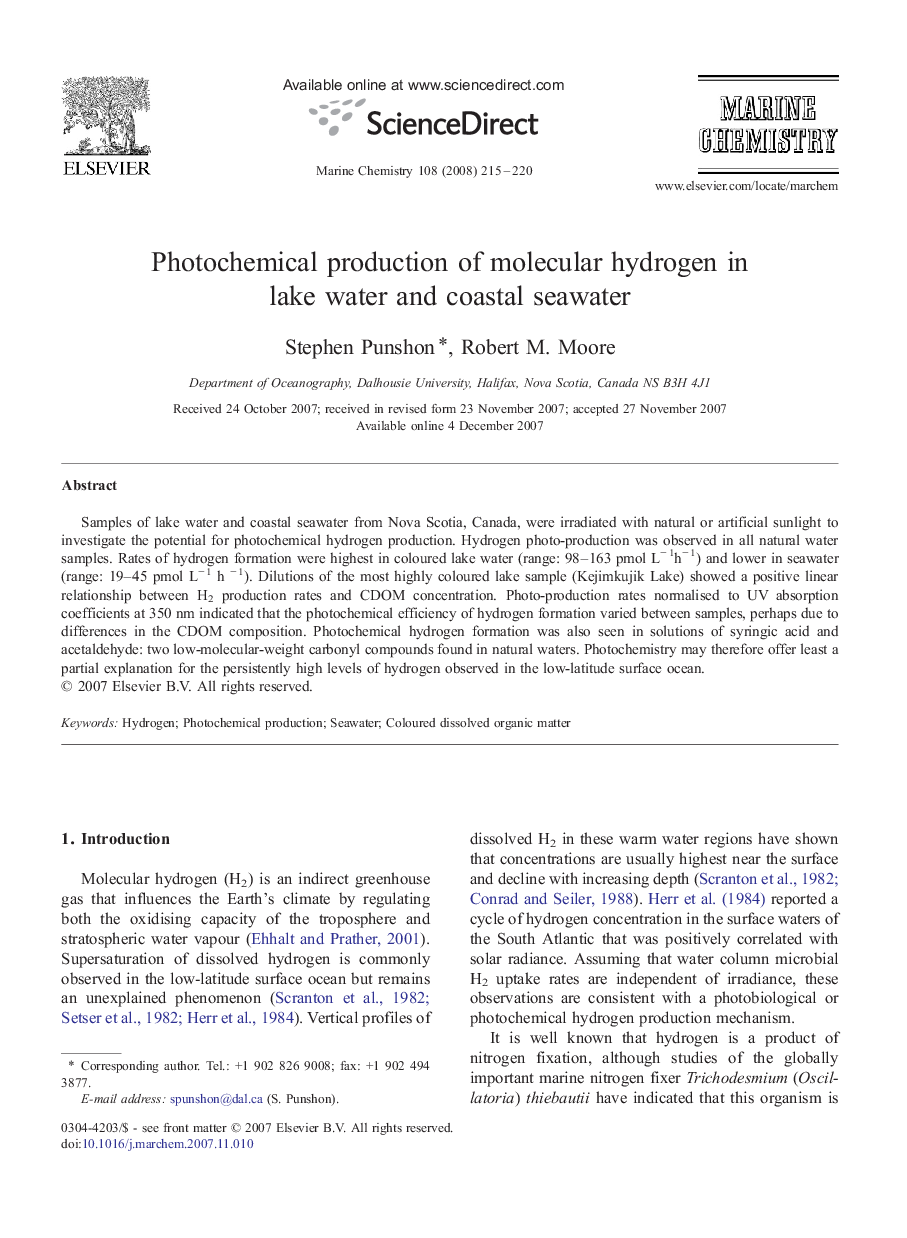| Article ID | Journal | Published Year | Pages | File Type |
|---|---|---|---|---|
| 1263216 | Marine Chemistry | 2008 | 6 Pages |
Abstract
Samples of lake water and coastal seawater from Nova Scotia, Canada, were irradiated with natural or artificial sunlight to investigate the potential for photochemical hydrogen production. Hydrogen photo-production was observed in all natural water samples. Rates of hydrogen formation were highest in coloured lake water (range: 98-163 pmol Lâ 1hâ 1) and lower in seawater (range: 19-45 pmol Lâ 1 h â 1). Dilutions of the most highly coloured lake sample (Kejimkujik Lake) showed a positive linear relationship between H2 production rates and CDOM concentration. Photo-production rates normalised to UV absorption coefficients at 350 nm indicated that the photochemical efficiency of hydrogen formation varied between samples, perhaps due to differences in the CDOM composition. Photochemical hydrogen formation was also seen in solutions of syringic acid and acetaldehyde: two low-molecular-weight carbonyl compounds found in natural waters. Photochemistry may therefore offer least a partial explanation for the persistently high levels of hydrogen observed in the low-latitude surface ocean.
Related Topics
Physical Sciences and Engineering
Chemistry
Chemistry (General)
Authors
Stephen Punshon, Robert M. Moore,
